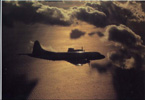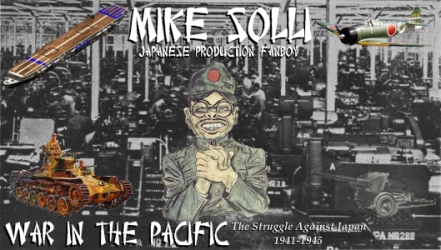Cuttlefish
Posts: 2454
Joined: 1/24/2007
From: Oregon, USA
Status: offline

|
December 31, 1943
Location: Off Ndini
Course: North
Attached to: TF 25
Mission: Surface Combat
System Damage: 2
Float Damage: 0
Fires: 0
Fuel: 419
Orders: Attack enemy forces at Espiritu Santo
---
Night lies over Espiritu Santo. A crescent moon provides thin illumination through scattered cloud cover as the Japanese column cruises south off the west coast of the island. On all ships men are alert and sharp eyes peer through the darkness in every direction. So far there has been no sign of enemy surface forces. No groups of torpedo boats have charged out of a cove or bay to challenge the intruders.
Admiral Tanaka plans to swing around the south side of the large island and enter Segond Channel from the west. The channel is deep and narrow, only some two kilometers wide, and runs for almost fifteen kilometers between Espiritu Santo and Aore Island. It provides a sheltered anchorage for any ships calling at Luganville and Tanaka knows that any enemy shipping will be found there.
Around midnight the Japanese ships clear South Cape at the southwest corner of Espiritu Santo and turn east. There is still no sign of the enemy. Straight ahead, about twenty five kilometers distant, is the dark bulk of Malo Island. Tanaka angles his ships to pass north of Malo and they head for the entrance to the channel.
It takes the better part of an hour to reach the channel. As the Japanese ships approach they spot a ship just inside the entrance. The darkened vessel is lying close against Aore Island and there is no sign yet that it has seen the approaching Japanese ships. Guns train towards the ship as the Japanese draw closer.
---
The ship is seaplane tender Ballard. The seaplanes she is to service will not arrive for a day or two and so the tender lies quietly at anchor. Most of the crew is sound asleep.
One lookout, however, sees Japanese ships, mere ghostly silhouettes in the darkness. He calls them to the attention of the ensign who currently has the bridge. The ensign is at first inclined to dismiss them as friendly warships – there have been a lot of them in these waters recently – but he does not recognize what he can make out of their profiles and something about the situation just doesn’t feel right. He sends someone to wake up the captain and orders a message broadcast.
**Alert. Unknown ships entering channel. Alert.**
---
Tanaka sends destroyer Shigure to deal with the lone vessel. Shigure closes swiftly and executes a textbook attack. Two torpedoes and multiple shells slam into Ballard. Fire leaps into the sky and Tanaka orders his ships on into the channel.
---
Well down the channel, near Luganville, DE Stadtfeld cruises slowly to the west. Stadtfeld is one of four destroyer escorts assigned to protect the convoy of seven freighters currently unloading here, but at this hour of the night the only other DE active is Fleming. The two ships are cruising back and forth along the channel on anti-submarine patrol. Stadtfeld has recently passed Fleming and the other ship is now receding to the east.
Lieutenant George Stubbins, inevitably nicknamed “Stubby” despite his lanky 6’ 2” frame, has the bridge when Ballard’s message comes in. Stubbins frowns and trains a pair of binoculars ahead, but can see nothing.
“Better get the captain up here,” he orders. It does not take long for Lieutenant Commander Hansen, Stadtfeld’s captain, to arrive. Stubbins shows him the message.
“Raise Ballard,” he orders the radio room. “I need more information.” Ballard’s position is screened by the curve of the channel, but suddenly a dull red glow flickers against the underside of the clouds from somewhere in that direction. A moment later the faint sound of explosions comes rolling across the water.
“Sound general quarters,” Hansen says. He suddenly no longer expects a reply from Ballard. “Engines ahead full.” Stadtfeld surges ahead, coming up to her top speed of 19 knots. Anxious eyes scan the dark channel ahead.
“I’ve got something, sir,” says the radar operator a little while later. “Multiple ships, 15,000 meters ahead. They are just clearing Aore, sir.”
Hansen raises his binoculars again. “I see them!” he says. “Look at those superstructures. Those are Japs. Two heavy cruisers and a lot of smaller stuff.” He orders an urgent warning broadcast to the ships behind him. Then he orders Stadtfeld to change course to intercept the oncoming ships.
“Uh, sir, those are Jap heavy cruisers,” Stubbins points out. “Our 3” guns will bounce off those things like ping pong balls.”
“I know,” says Hansen grimly. “But those freighters behind us are sitting ducks. We have to give them enough time to get underway and scatter.”
“Yes sir,” says Stubbins. Hansen is a reserve officer and he has been slighted for that status more than once by regular navy men. But he knows his duty and he knows his men will follow his orders. In the finest tradition of the United States Navy Stadtfeld moves out to engage the enemy.
---
It is twenty minutes later. Stadtfeld is dead in the water, down at the bows from a torpedo hit and afire from a merciless storm of 8” shells. Captain Hansen stands on the bridge as Stubbins, who is also injured, wraps a bandage around his shattered left forearm. Half of the bridge crew is dead and the deck is slippery with blood. The port side of the bridge is a twisted mass of metal open to the weather. Fire leaps up from somewhere below and flames curl in around the edges.
“Abandon ship,” Hansen orders through gritted teeth. Another shell crashes into Stadtfeld and then the shelling abruptly stops. Stubbins helps Hansen down to the weather deck, where the surviving crew are trying to launch the undamaged boats. Amazingly no further Japanese shells come their way.
“Oh ****,” says somebody. A Japanese destroyer looms out of the murk, bristling with weapons that are all trained on the stricken ship. The crew stops and stands mutely as death sweeps within 100 meters of them. Reflected firelight shows expressionless oriental faces regarding them from the bridge and elsewhere on the destroyer. Suddenly somebody aboard the Japanese ship bawls an order. The Japanese come to attention, facing Stadtfeld, and salute.
“I will be god damned,” says one of Stadtfeld’s petty officers as the destroyer sweeps past and vanishes into the darkness. The spell is broken and Stadtfeld’s crew resumes the scramble to get off their ship before it sinks under them.
---
Stadtfeld offers the only resistance the Japanese encounter. Fleming comes charging back down the channel but takes an 8” shell in the engine room and is out of the fight before really entering it. The other two DE’s never even manage to clear the docks.
In the channel the white light of Japanese star shells soon mixes with the red glow of burning ships as the Japanese pursue the fleeing freighters. Near the rear of the Japanese column Hibiki has been seeking a target. Suddenly one is found.
“Freighter fifty degrees to starboard, range 3500 meters,” calls a lookout. Captain Ishii raises his binoculars. An enemy ship is trying to slip away undiscovered almost under the shadow of mountainous Aore Island.
“There is our target,” he says. “Lieutenant Kuwaki, commence firing. Lieutenant Sugiyura, prepare a torpedo attack. You may launch when you are ready.” A moment later Hibiki’s 5” guns boom. The first salvo is short of the target, but Kuwaki makes adjustments and the guns fire again.
The target, though they do not know it, is the Liberty ship Charles F. Amidon. The 441’ freighter has a top speed of 11 knots and has no chance to get away from swift Hibiki. Shells begin to find the range and then, for the first time in a year and a half, Hibiki launches a spread of torpedoes. Two strike the freighter, sealing her fate.
“Well done,” says Ishii. Sugiyura merely nods. Now that they are again in battle the enthusiastic torpedo officer is carrying out his duties with cool, methodical precision.
No further targets present themselves. Elsewhere other ships are similarly chased down and attacked. Finally Tanaka signals all ships to follow and the Japanese column proceeds down the channel, where they exit its east end and turn north. Behind them the narrow passage is covered with oil and debris and dotted with dead and dying ships. Men struggle in the water, trying to stay afloat for the rescue boats that are already putting out from Luganville.
It has been a small victory, but a victory nonetheless. By the time the sun rises on New Year’s Day, the most important holiday of the year for the Japanese, Tanaka’s ships are well on their way back towards Kwajalein. Spirits are high among the crews as they head back north.
---
Tanaka’s track around Espirtu Santo:

 Attachment (1) Attachment (1)
|
 Printable Version
Printable Version
























 Doobie doobie do.....
Doobie doobie do.....

 Ohboy . . . I had that unpleasant feeling in the back of my spine as soon as the fugitive came over the fence. It's a small world -- especially on an island nation.
Ohboy . . . I had that unpleasant feeling in the back of my spine as soon as the fugitive came over the fence. It's a small world -- especially on an island nation.



 New Messages
New Messages No New Messages
No New Messages Hot Topic w/ New Messages
Hot Topic w/ New Messages Hot Topic w/o New Messages
Hot Topic w/o New Messages Locked w/ New Messages
Locked w/ New Messages Locked w/o New Messages
Locked w/o New Messages Post New Thread
Post New Thread